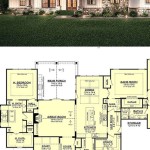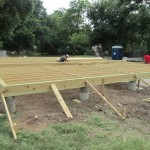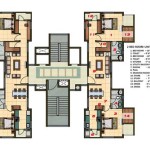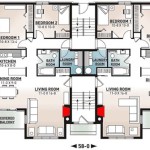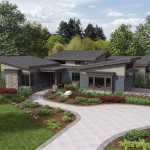Narrow Sloping Lot House Plans: Navigating Design and Construction Challenges
Building a home on a narrow sloping lot presents unique architectural and engineering challenges. However, with careful planning and innovative design, these seemingly difficult sites can be transformed into stunning and functional living spaces. Narrow sloping lot house plans require a tailored approach that considers the specific site conditions, maximizes usable space, and minimizes environmental impact. This article explores the key considerations involved in designing and building homes on such properties, examining the design principles, construction techniques, and common challenges encountered.
The first step in developing narrow sloping lot house plans is a thorough site analysis. This analysis should encompass topographic surveys to accurately map the slope's contours, geotechnical investigations to assess soil stability and bearing capacity, and environmental assessments to identify potential hazards or restrictions. Understanding the slope's gradient, orientation, and drainage patterns is crucial for determining the optimal building footprint and foundation design. Furthermore, local building codes and zoning regulations must be carefully reviewed to ensure compliance with setback requirements, height restrictions, and other development constraints.
Addressing drainage is paramount on sloping lots. Uncontrolled runoff can lead to soil erosion, foundation damage, and basement flooding. Effective drainage strategies may include the installation of retaining walls, French drains, and swales to divert water away from the building. Proper grading and landscaping can also play a significant role in managing surface runoff. Integrating sustainable drainage solutions, such as rain gardens and permeable paving, can further enhance the property's environmental performance.
Optimizing Space and Layout
One of the key considerations in narrow sloping lot house plans is maximizing usable space. The limited width of the lot often necessitates a vertical design approach, with multiple stories or split-level configurations. These designs can effectively utilize the available land area while minimizing the building's footprint. Careful consideration should be given to the placement of rooms and the flow of circulation within the house. Open-concept layouts can create a sense of spaciousness, while strategically placed windows and skylights can bring natural light into the interior.
Integration with the natural slope is another important aspect of optimizing space. The design can incorporate terraced levels that follow the contours of the land, creating seamless transitions between indoor and outdoor spaces. Decks, patios, and balconies can extend the living area and provide stunning views. Excavation may be required to create level building pads or to accommodate basements or underground garages. However, excessive excavation can destabilize the slope and require extensive retaining walls, so a balanced approach is necessary.
Smart storage solutions are essential in narrow homes. Built-in cabinets, shelving units, and under-stair storage can help maximize space and minimize clutter. Utilizing vertical space with tall cabinets and lofts can also provide additional storage capacity. The design should prioritize functionality and efficiency, with every square foot serving a purpose. Multi-functional spaces, such as home offices that can double as guest rooms, can further enhance the home's versatility.
The orientation of the house on the lot can significantly impact energy efficiency and natural lighting. In colder climates, orienting the house towards the south can maximize solar gain during the winter months. In warmer climates, shading the house from direct sunlight can reduce cooling loads. Strategically placed windows and overhangs can control solar heat gain and glare. Natural ventilation can also be enhanced by orienting windows to capture prevailing breezes.
Foundation Design and Slope Stabilization
The foundation design is a critical aspect of narrow sloping lot house plans, as it must provide stability and support for the building while accommodating the slope's gradient. Several foundation options are available, each with its own advantages and disadvantages. A common approach is to use a stepped foundation, which follows the contours of the slope and creates varying floor levels within the house. This type of foundation can minimize excavation and provide direct access to the ground at different points. Another option is a pile foundation, which uses deep vertical supports to transfer the building's load to stable soil layers below the surface. Pile foundations are particularly suitable for unstable or expansive soils. A slab-on-grade foundation may be viable for smaller, less steeply sloped lots.
Retaining walls are often necessary to stabilize the slope and prevent soil erosion. These walls can be constructed from a variety of materials, including concrete, masonry, timber, and segmental retaining wall blocks. The design of the retaining wall must account for the soil's pressure, drainage, and surcharge loads. Proper drainage is essential to prevent hydrostatic pressure from building up behind the wall. Geotextile fabrics can be used to filter soil particles and prevent clogging of the drainage system. The height and type of retaining wall will depend on the slope's steepness and the desired level of stability.
In some cases, soil stabilization techniques may be required to improve the soil's bearing capacity and reduce the risk of landslides. These techniques may include soil compaction, soil reinforcement, and chemical stabilization. Soil compaction involves increasing the density of the soil by applying mechanical pressure. Soil reinforcement uses geogrids or geotextiles to increase the soil's tensile strength. Chemical stabilization involves adding chemicals to the soil to improve its properties. The selection of the appropriate soil stabilization technique will depend on the soil type and the severity of the slope instability.
Proper construction sequencing is critical to ensure the stability of the slope during construction. Excavation should be done in stages, with temporary support structures installed as needed. The foundation should be constructed before any significant excavation is undertaken. Drainage systems and retaining walls should be installed before any backfilling is done. Regular monitoring of the slope's stability is essential throughout the construction process. A qualified geotechnical engineer should be consulted to oversee the foundation design and construction.
Addressing Accessibility and Circulation
Accessibility can be a significant challenge on sloping lots, particularly for individuals with mobility impairments. The design should incorporate features that promote universal accessibility, such as ramps, elevators, and accessible pathways. Ramps should have a gentle slope and slip-resistant surfaces. Elevators can provide access to multiple levels of the house. Accessible pathways should be wide enough to accommodate wheelchairs and other mobility devices.
The external circulation system should be carefully planned to provide safe and convenient access to the house. Stepped pathways should have adequate lighting and handrails. Driveways should have a gentle slope and be properly drained. Parking areas should be located close to the house entrance. The design should also consider the needs of delivery vehicles and emergency services.
Internal circulation within the house should also be designed to optimize accessibility. Wide doorways, clear floor space, and grab bars can make it easier for individuals with mobility impairments to navigate the house. Elevators or stair lifts can provide access to upper floors. The design should anticipate future accessibility needs and incorporate features that can be easily adapted to accommodate changing mobility requirements.
Integrating the house with the surrounding landscape can enhance accessibility and create a more welcoming environment. Terraced gardens, accessible pathways, and outdoor seating areas can provide opportunities for outdoor recreation and social interaction. The landscape design should complement the architectural style of the house and create a cohesive and harmonious environment. The use of native plants can reduce maintenance requirements and enhance the property's environmental sustainability.
Furthermore, incorporating "aging-in-place" design principles can ensure the home remains comfortable and accessible throughout the homeowner's life. This includes features like lever-handled door and faucet hardware, comfort-height toilets, and curbless showers. Planning for future needs can prevent costly renovations later on.
In conclusion, successfully designing and building on a narrow sloping lot requires a comprehensive understanding of site conditions, innovative design solutions, and meticulous construction practices. By carefully considering the challenges and opportunities presented by these unique properties, it is possible to create homes that are both beautiful and functional, maximizing usable space, minimizing environmental impact, and enhancing the quality of life for their occupants.

Contemporary House Plan For The Up Sloping Lot

A Guide To Sloping Lot House Plans

The Best House Plans For Sloped Lots And Narrow Houseplans Blog Com

Plan Kd 3287 2 3 Two Story Bed House For Narrow Sloping Lot

The Best House Plans For Sloped Lots And Narrow Houseplans Blog Com

House Plans For A Sloped Lot Dfd Blog

Modern House Plan For A Sloping Lot 85184ms Architectural Designs Plans

Sloped Lot House Plans Down Slope The Designers

Affordable Home Plan Ch59

The Best House Plans For Sloped Lots And Narrow

